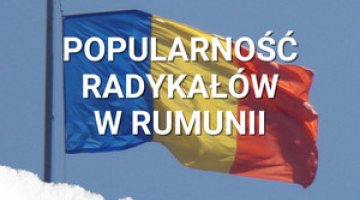The government coalition in Romania breaks up
On 25 February, the National Liberals (PNL), the Social Democrats’ (PSD) key coalition partner in the cabinet led by Victor Ponta, decided to withdraw their ministers from the government and move into opposition. The government coalition now consists of Ponta’s Social Democratic Party and two small groupings: the Conservative Party (PC) and the National Union for the Progress of Romania (UNPR). The government has lost its parliamentary majority (it is 14 votes short in a parliament consisting of 575 deputies and senators), but Prime Minister Ponta has started talks aimed at attracting the Democratic Union of Hungarians in Romania (UDMR) to the coalition. The vote to approve the makeup of the new government is scheduled to take place at a combined session of the two houses of parliament on 4 March.
Commentary
- The coalition bloc named Social Liberal Union (USL) has governed the country since May 2012 and gained a constitutional majority in the election in December 2012 but the departure of the National Liberals from the government has spelt its demise. This break-up is a consequence of the differences in the agendas of the Social Democrats and the National Liberals, and of the ambitions of their leaders. The main thing the two parties had in common was their struggle against the centre-right president, Traian Basescu. As Basescu’s second term in office was neared its end, the unity within the coalition gradually weakened.
- The main reason behind the USL’s disintegration is the increasingly bitter rivalry for the presidency. The USL coalition agreement provided that a representative of the National Liberals should be the coalition’s joint candidate for president. The Social Democrats, whose support levels are higher, have been increasingly opposed to this solution, especially when it became unclear whether the amendments to the constitution restricting the presidential prerogatives would be introduced (the Constitutional Court called into question a number of amendments last week). Now that the USL has broken up, the Social Democrats will be able to put forward their own candidate, e.g. Prime Minister Ponta or the head of central bank, Mugur Isarescu, who does not belong to any party and enjoys great public trust. In turn, the National Liberals, having left the coalition, will feel more at liberty to seek support from the centre-right electorate, including those who used to vote for Traian Basescu. They will thus be able to appeal to those voters who dislike the government and who have not been taken over by the right-wing opposition parties, which are currently in crisis.
- Prime Minister Ponta is very likely to form a new government in a quick and effective way. Although the PSD, the PC and the UNPR have no majority, independent MPs and representatives of the national minorities traditionally back the government. The grouping representing the Hungarian minority in Romania, the UDMR, is more than likely to join the Ponta government. The government coalition will thus have a safe majority (55%) in parliament. No changes should be expected in foreign and economic policy. However, if Crin Antonescu, the leader of the National Liberals wins the presidential election this autumn, this will pose a challenge to the stability of the renewed Ponta cabinet. Antonescu’s statements indicate that he will attempt to build a new government coalition with the PNL at the pivot and will try to attract MPs from other parties to his side (during the previous tenure, 25% of deputies and senators changed parliamentary clubs).




